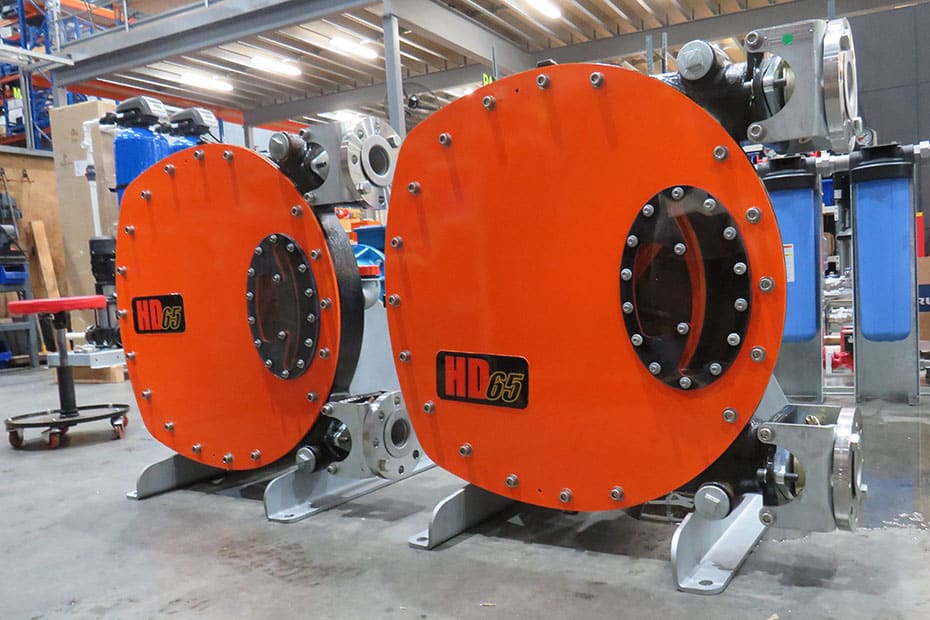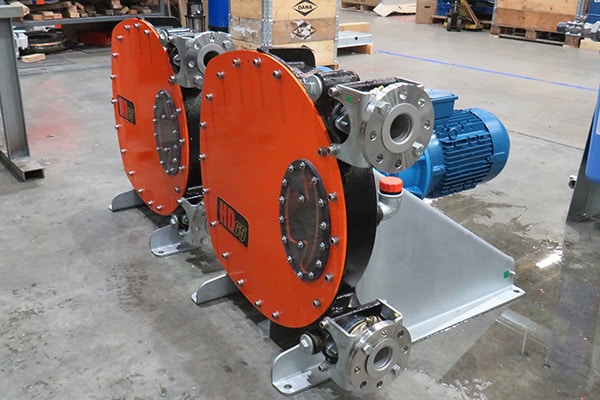
Thinking about using a peristaltic pump in your operation? Before you make a purchase, it’s worth knowing exactly what you’re getting. From handling harsh fluids with ease to needing regular tube replacements, this pump type has its strengths and limitations. In this quick guide, we break down the peristaltic pumps pros and cons so you can make a more confident choice for your business.
Peristaltic pumps operate using a rotating roller mechanism that compresses a flexible tube, pushing fluid forward in a smooth, pulsing motion. This design avoids the turbulent forces found in many other pump types, making it ideal for handling shear-sensitive fluids such as emulsions, slurries, or delicate biological solutions. Industries dealing with fine chemicals, food products, or biotech materials often benefit from this low-impact transfer method, which helps maintain product integrity and consistency throughout processing.
One of the standout advantages of peristaltic pumps is that the pumped fluid is completely contained within the flexible tube. This means there is no direct contact between the fluid and the mechanical components of the pump, drastically reducing wear and tear from abrasive or solid-laden fluids. This makes peristaltic pumps particularly suitable for handling slurries, mining tailings, wastewater with grit, or other challenging media that would quickly degrade traditional pump internals. The result is longer equipment life and lower maintenance costs.
Peristaltic pumps are capable of self-priming, even when dry, and can run without damage if the fluid supply is interrupted. This resilience is especially valuable in environments where consistent flow isn’t guaranteed or where the pump may need to start and stop frequently—such as in chemical dosing, dewatering, or mobile tank transfer systems. Unlike many centrifugal pumps, there’s no need for pre-filling or special startup procedures, which simplifies operation and reduces risk during fluctuating process conditions.
The versatility of peristaltic pumps lies in their tubing. By selecting the appropriate tube material—such as Natural Rubber and EPDM—these pumps can be configured to handle a wide range of aggressive chemicals, high-viscosity fluids, or temperature-sensitive media. Because the fluid path is limited to the inner surface of the tubing, changing tubing material is a fast and cost-effective way to adapt a single pump to a variety of applications. This makes them ideal for facilities that process multiple fluid types or need flexible, modular equipment.
Maintenance of a peristaltic pump is straightforward—most issues can be resolved by simply replacing the tubing, which is a fast and tool-free process in many models. There are no seals, valves, or impellers to worry about, which eliminates common failure points and reduces the need for specialist service. For industries focused on uptime and operational efficiency, this translates to minimal disruption, predictable maintenance schedules, and lower lifetime costs compared to more complex pumps.
Because the pumped fluid only comes into contact with the inner surface of the tubing, the risk of cross-contamination is eliminated. This is crucial in applications requiring strict hygiene or fluid purity, such as in pharmaceutical production, food and beverage processing, or specialty chemical manufacturing. Cleaning or product changeovers are also simpler, often requiring nothing more than a tubing swap, which supports compliance with industry standards and reduces cleaning validation time.
One of the main maintenance considerations with peristaltic pumps is tubing wear. The constant compression and release of the tube by the rollers gradually degrades the material, especially when handling abrasive or chemically aggressive fluids. However, changing the tubing is usually quick and simple procedure.
Peristaltic pumps are best suited to low- to medium-flow rate applications. Their design makes them excellent for precise dosing, batching, and transfer of small to moderate volumes—but less ideal for large-scale fluid movement. If your process demands thousands of litres per minute, a peristaltic pump is unlikely to meet throughput requirements without significant upsizing.
Peristaltic pumps generally have lower pressure capabilities compared to alternatives like diaphragm or piston pumps. Most models are limited to pressures in the range of 7 to 16 bar (100 to 230 psi), depending on the tubing material and pump design. This limits their use in applications where long pipe runs, elevation changes, or high-resistance systems demand greater pressure to maintain flow.
The operating principle of a peristaltic pump creates a pulsed flow rather than a smooth, continuous stream. While this isn’t an issue in many applications, it can cause challenges in systems where constant, non-fluctuating flow is essential—such as in certain chemical reactions, metering processes, or sensitive filtration setups. In these cases, additional equipment like pulsation dampeners or accumulator tanks may be needed to smooth out the flow.

PSG’s Abaque peristaltic pumps are built for industrial performance. With no seals, valves, or moving parts in contact with the fluid, Abaque pumps deliver reliable, leak-free operation even with abrasive slurries, corrosive chemicals, and viscous fluids. Backed by proven French engineering and supported locally by our team, they’re a smart choice for businesses that demand durability and ease of maintenance.
Talk to Allied Pumps today and find out if Abaque is the right fit for your application.

Contact us to learn about how we can help you with your pump needs.
CALL US NOW EMAIL US